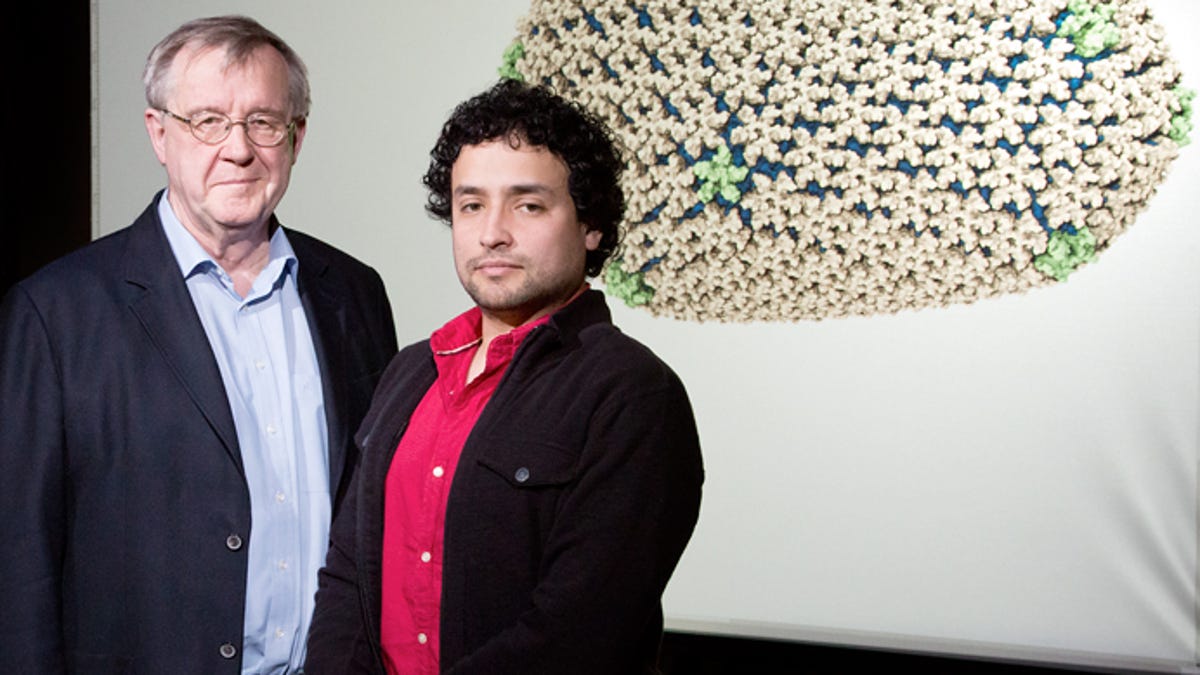'Blue Waters' supercomputer helps crack HIV code
Researchers say they have determined the precise chemical structure of the HIV capsid, a protein shell that protects HIV's genetic material and enables it to debilitate the immune system.

Scientists have been investigating the structure of the HIV capsid for years; the protein shell protects the virus' genetic material, helps debilitate the infected person's immune system, and is the target for the development of new antiretroviral drugs. Research teams have turned to a wide range of futuristic-sounding techniques to crack the code, from cryo-electron microscopy and nuclear magnetic resonance spectroscopy to cryo-EM tomography and X-ray crystallography.
Now, thanks to a little help from the supercomputer Blue Waters, the mystery finally has been unraveled, according to a research team reporting this week in the journal Nature.
Blue Waters, a relatively new supercomputer at the National Center for Supercomputing Applications at the University of Illinois at Urbana-Champaign, is a rare breed of petascale supercomputers, which means it can manage one quadrillion floating point operations every second. It was able to piece together the entire HIV capsid -- which consists of more than 1,300 identical proteins that form a cone-like structure -- in atomic-level detail.
"This is a big structure, one of the biggest structures ever solved," said University of Illinois physics Professor Klaus Schulten in a school news release. "It was very clear that it would require a huge amount of simulation -- the largest simulation ever published -- involving 64 million atoms."
Alongside postdoc researcher Juan R. Perilla, Schulten helmed the molecular simulations that used data from lab experiments performed at the University of Pittsburgh and Vanderbilt University.
"The work of matching the overall capsid, made of 64 million atoms, to the diverse experimental data can only be done through computer simulation using a methodology we have developed called molecular dynamic flexible fitting," Schulten said. "You basically simulate the physical characteristics and behavior of large biological molecules, but you also incorporate the data into the simulation so that the model actually drives itself toward agreement with the data."
Thanks to earlier work, the researchers knew the capsid contained a number of identical proteins that were arranged into pentagons and hexagons. With the help of an electron microscope, they guessed that the pentagons formed the most tightly rounded corners. But they didn't know how the pentagons and hexagons fit together to form the capsid. The total structure remained elusive.
Until now.
The team found that the HIV capsid comprises 216 protein hexagons and 12 protein pentagons arranged just as the experimental data suggested. The proteins that make up these pentagons and hexagons are identical, but from one region of the capsid to another, the angles of attachment vary -- a phenomenon Schulten called the real "mystery" of the capsid: "How can a single type of protein form something as varied as this thing? The protein has to be inherently flexible."
It turns out the pentagons "induced acute surface curvature," the researchers report, which means the capsid could be a closed structure -- something that would be impossible had it been composed only of hexagons.
"The sustained petascale performance of Blue Waters is precisely what enabled these talented researchers to explore new methods combined with structural and electron microscopy data to reliably model the chemical structure of the HIV capsid in great detail," said Irene Qualters, National Science Foundation program manager for Advanced Cyberinfrastructure, in a news release. "This knowledge will allow researchers to infiltrate that membrane with HIV-fighting drugs."
Now that researchers have such a detailed structure of the capsid, they can better investigate how it functions, which in turn can better inform how to treat infection.

